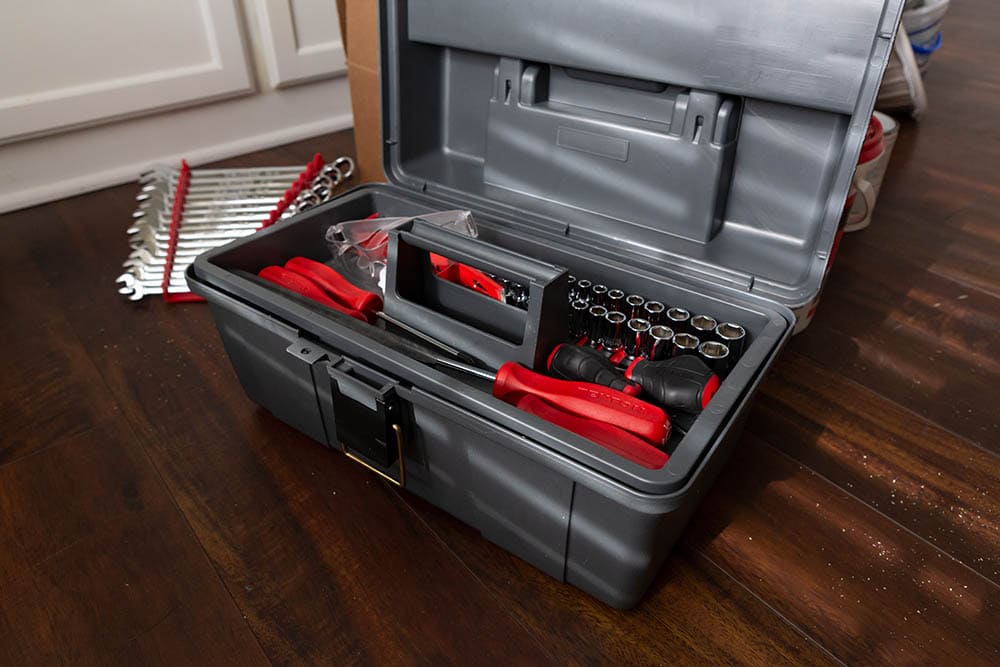When to Change a Serpentine Belt? Facts, FAQs & Step-by-Step Guide
-
Shea Cummings
- Last updated:

The serpentine belt is an unassuming component of your vehicle. Even though it’s important, it’s often missed with routine maintenance. The good news is that there are usually signs that it’s going.
However, if the signs are ignored, it typically results in being stranded and needing a tow. That’s why it’s important to follow the manufacturer’s suggested maintenance schedule.
A serpentine belt is expected to last 60–100,000 miles on average, and most manufacturers will suggest it’s changed around 75,000 miles regardless of wear. Your vehicle owner’s manual will give you the exact recommendation.
What is a Serpentine Belt?
The serpentine belt essentially does the same job on any vehicle: using rotational power from the engine, it runs several of the vehicle’s components.
Typically, it will run the alternator and power steering pump. The serpentine belt will also run the air conditioning compressor if the vehicle has an air conditioning system. And on some vehicles, the belt is also responsible for running the water pump.
When the belt breaks, all these systems will cease to function. Your vehicle’s power steering system won’t work, and the alternator won’t charge the battery. If the belt is running the water pump, the engine will overheat. The bottom line: you’ll need a tow to the shop.

Signs the Serpentine Belt Needs Replacing
Outside of changing the belt as preventative maintenance when the manufacturer suggests, there are visual signs and sounds that indicate it needs to be changed earlier.
- Cracking along the ribs
- Belt strands fraying
- Shiny or glazed areas on the belt
- A dirty or oily buildup
- Sloppy fitment or lots of play
- Loud squeaking or squealing when the belt starts turning
Other Signs
A couple of other things may indicate that the serpentine belt needs to be replaced. If the battery has lower power, that suggests that the alternator isn’t working. This could be a faulty alternator, or the serpentine belt is not spinning it adequately.
Overheating and the air conditioning not working are two other possible signs the serpentine belt is either blown apart or damaged enough that it’s not working correctly. The chances are high that you’ll notice the visual signs or sounds before these things happen, though.
The Step-by-Step Guide To Changing a Serpentine Belt
Most serpentine belt changes are relatively straightforward if you are reasonably comfortable working on your vehicle.
The exact routing of the belt and belt tensioner placement is model-specific. So, you’ll have to look in your owner’s manual or find a breakdown online. But the following steps are pretty universal between vehicles.
1. Find the Tensioner
Locate the belt tensioner as per your manual. Sometimes, you may have to remove some plastic or other parts to access it.
2. Loosen Tensioner
There are specialty belt tensioner tools available. But often, a box wrench or a socket will work. Using whichever tool, engage the tensioner and release the pressure from the belt.

3. Remove Belt
As you relieve the tension on the belt, you will be able to slide it off. Once you have it off of one pulley, you can release the tensioner because there will be enough slack in the belt.
4. Install New Belt
Re-route the new belt over all the pulleys. Ensure that you are matching the manufacturer’s specification for routing and direction. Once you get to the last pulley, you’ll have to engage the belt tensioner again to slip the belt on.

5. Return Everything to Normal
Before you put any pieces back that you took off, have a look at all the pulleys. Make sure that the new serpentine belt is seated in its spot.
The new belt may squeak for a moment when you first fire it up. But it should seat itself right away and stop squealing. If it doesn’t, it’s worth checking the belt again to ensure it’s in place, so it doesn’t get damaged.
FAQ: Changing Serpentine Belts
Is there anything to help check belt wear?
There are tools you can get that measure the rib depth of the belt. A deep rib depth indicates the belt is on its last leg.
Is my vehicle safe to drive if the serpentine belt goes?
It’s not advised that you drive anywhere if the belt is gone. Your car will overheat, and your power steering will not function correctly.
What’s the correct serpentine belt tension?
The entire belt should be tight and take considerable force to cause the belt to show any slack. If this is not the case and your belt is in good shape still, the belt tensioner may need replacing.
It’s often recommended that you replace the belt tensioner with the belt.
Conclusion
Even though a serpentine belt should last a long time, it shouldn’t be ignored. It would be best if you inspected it for damage regularly. The nice thing about these belts is they are relatively easy to change, so they are a pretty cheap form of vehicle maintenance.
- https://autopartsu.com/2020/06/01/5-indications-that-it-is-time-to-replace-your-serpentine-belt/
- https://vatire.com/car-maintenance-tips/everything-you-need-to-know-about-serpentine-belts/
- https://www.knowyourparts.com/technical-resources/engine/when-to-replace-serpentine-belts/
- https://www.e3sparkplugs.com/blog/when-should-you-replace-the-serpentine-belt/
- https://www.thedrive.com/maintenance-repair/37031/serpentine-belt
- https://www.allstate.com/tr/car-insurance/serpentine-belts.aspx#:~:text=What%20Does%20a%20Serpentine%20Belt,when%20the%20car%20is%20running.
Featured Image Credit: J.J. Gouin, Shutterstock
Contents
